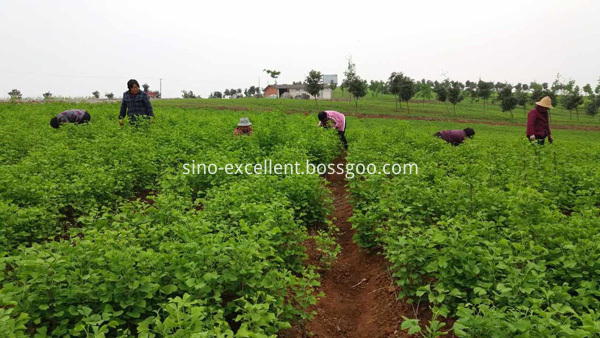Organic-inorganic compound fertilizers refer to compound fertilizers containing organic matter and inorganic nutrients. Most organic materials use organic fertilizers after processing (such as livestock and poultry excrement, urban waste organics, sludge, straw, sawdust, food processing waste, etc.), and substances containing organic matter (peat, weathered coal, lignite, humic acid, etc.). There are also substances that add microbial agents and stimulate growth. They are called organic active fertilizers or biological slow-release fertilizers. The inorganic nutrients are mainly chemical fertilizers. Due to the complex composition of organic-inorganic compound fertilizers, it is necessary to pay attention to its practical effects when it is promoted. Pay special attention to the following points. First, the organic fraction of organic-inorganic compound fertilizers will not be very effective At present, the organic content of most organic-inorganic compound fertilizers is about 50%. If 50%, 200 kg of organic-inorganic compound fertilizer is applied per mu, and only 100 kg of organic matter is applied. Many tests have shown that it is effective to apply 1500 kilograms of organic fertilizer per acre; if 30% water juice is used, organic fertilizer applied per unit area should reach 1050 kilograms to be effective. It can be seen that organic fertilizers applied with organic-inorganic compound fertilizers have a limited fertilizer effect. The greatest role of organic matter in organic-inorganic compound fertilizers may be the adsorption of inorganic nutrients. Organic matter is a dispersed porous body that will hold part of the fertilizer nutrients. After the organic-inorganic compound fertilizer is applied to the soil, part of the fertilizer is dissolved in water, part of it is absorbed by the crop, and part of it is held by the organic matter, which plays a role in buffering the supply of the fertilizer. Many organic-inorganic compound fertilizers show about 10% increase in fertilizer efficiency (compared with the same amount of inorganic fertilizers). This may be the reason. Second, the role of microorganisms in organic-inorganic compound fertilizers will not be much It is well-known that microorganisms have activity in certain environments. This environmental requirement is very high. Most chemical fertilizers are salts, which have high solubility and activity on microorganisms will certainly play a role in killing or inhibiting them. During the processing of organic-inorganic compound fertilizers, the chemical fertilizers use dry materials, which contain no or little moisture, and inhibit the activity of microorganisms. After the fertilizer is applied to the soil, the water is sufficient, and it is impossible for the high-concentration fertilizer solution to be revitalized and added to the microorganisms, only the added microorganisms may be killed. The so-called active organic compound fertilizers and bio-organic compound fertilizers are difficult to determine. Third, the fertilizer effect of organic-inorganic compound fertilizer is mainly the effect of inorganic fertilizer Organic-inorganic compound fertilizers are a variety of compound fertilizers. According to the international regulations, the total nutrient content of compound fertilizer nitrogen+phosphorus pentoxide+potassium oxide=10+6+9=25% indicates that the inorganic compound fertilizer contains 10% nitrogen, 6% phosphorus and 9% potassium. Su. Then, when applying 100 kg of this fertilizer per acre, for most crops, it has been able to meet the demand for high yield levels. At this time, there are only 50 kilograms of organic matter per mu. It can be imagined that if there is no effect of chemical fertilizers in organic-inorganic compound fertilizers, the amount of organic components will have no effect. Therefore, when we apply organic-inorganic compound fertilizers, we must first pay attention to the content and proportion of fertilizers, and consider the price and application effect. Due to the addition of organic substances, the cost of organic substances and the increase in processing costs are added to the unit nutrient price of the organic-inorganic compound fertilizer, making the unit nutrient price of this fertilizer higher than that of general compound fertilizers. This should also be taken into account when applying organic-inorganic compound fertilizers.
Berberine,
Rutin,
Ginseng leaf & stem p.e. ,
Ginseng root p.e.
Ginseng flower p.e.
Green Tea P.e.,
5-HTP,
grape seed extract,
blackcurrant extract,
Monkfruit extract
stevia extract
Ginger root extract
Curcumin
Low pesticide residue
low solvent residue
low heavy metal
non-irradiation
non-GMO
Ginseng leaf p.e. ,Green Tea P.e., herbal extract, plant extract Excellent Health Products Co.,Ltd. , https://www.sino-excellent.com
